'The Mandalorian' Set Photos Reveal Seamless "Stagecraft" Technology At Work
Even though Disney+ spent a lot of money to get the live-action Star Wars series The Mandalorian off the ground, they still had to be a little more conservative with the budget than they are with the feature films. Instead of building massive sets, Lucasfilm is utilizing new "Stagecraft" technology that uses a rear-projected LED screen to create a reactive environment that essentially works as an immersive real-time green screen. Now, thanks to new set photos from behind the scenes, we can see the Stagecraft tech at work.
The Mandalorian Stagecraft Photos
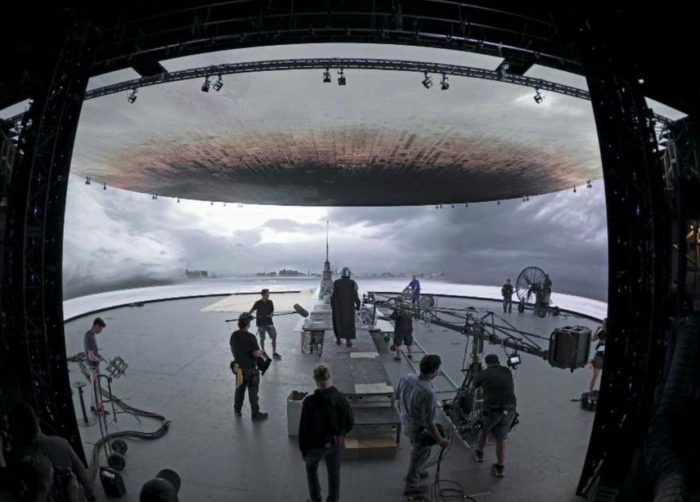
Here's a wide glimpse at the Stagecraft being utilized in the opening scene of The Mandalorian from the first episode. As you can see, the screen surrounds the entire set and allows the crew to shoot from any angle. The technology allows the screens to change how the environment looks based on how a scene is being shot.
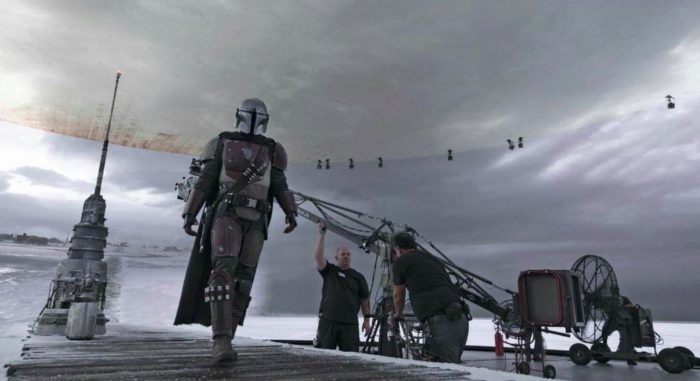
So if the camera is panning along with a character (as above), the perspective of the environment moves as the camera does, recreating what it would be like if a camera were moving in that physical space. You can get a better idea of how this is achieved over here.
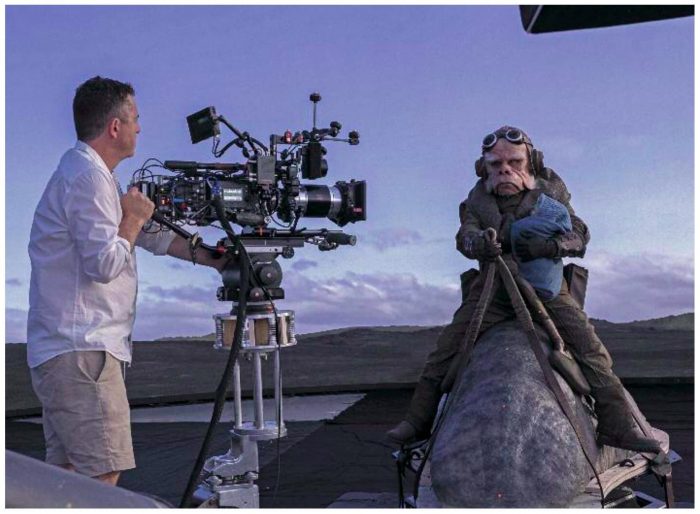
This is especially helpful when you have a shot featuring a character in fast motion across a big environment. For example, here's a shot of Kuiil riding a blurrg with Baby Yoda in hand, trying to make it back to The Mandalorian's ship the Razor Crest as Imperial Scout Troopers are in pursuit. The screens surround the actor and allow for seamless depiction of him riding through the desert.
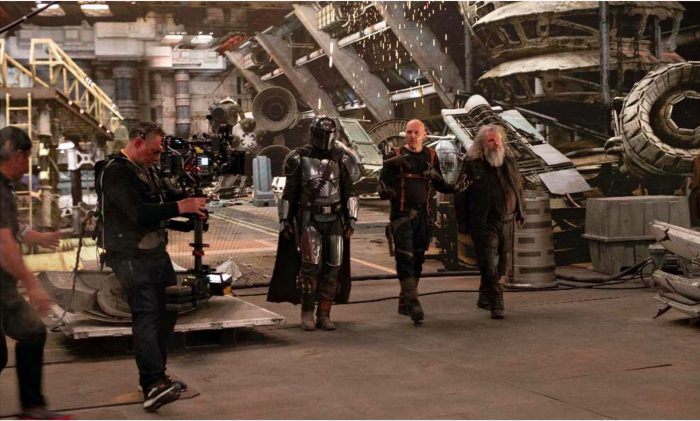
It's not just sparse landscapes where the Stagecraft screens are helpful either. In this shot from the sixth episode of the series, you can see the busy background of the docking bay on Ranzar Malk's ship. Parts are strewn all over the place, and sparks fly from people fixing their ships. It would take countless props and crew members to bring that set to life in the real world. But here, it's created digitally, with the assistance of physical foreground pieces to help blend the real with the digital.
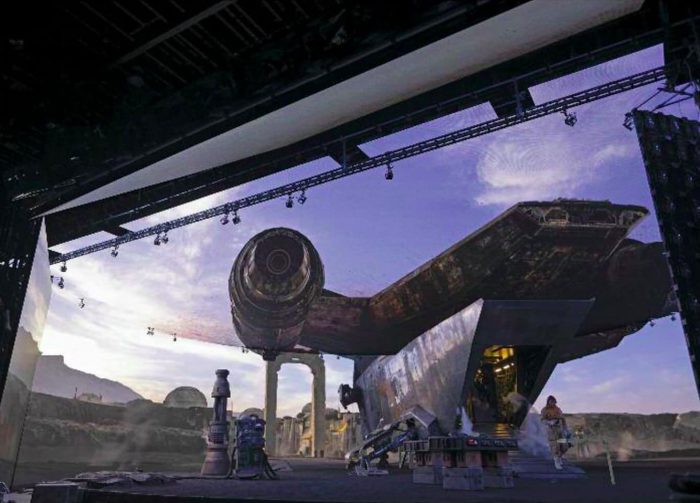
Sometimes the screen technology is used to complete the partial, practical ship used on set. As you can see above, screens around and above a half-completed version of the ship extend the set digitally. It's much cheaper than building the entire ship itself, and the perspective change allows them to shoot it from any angle and still see the entire ship.
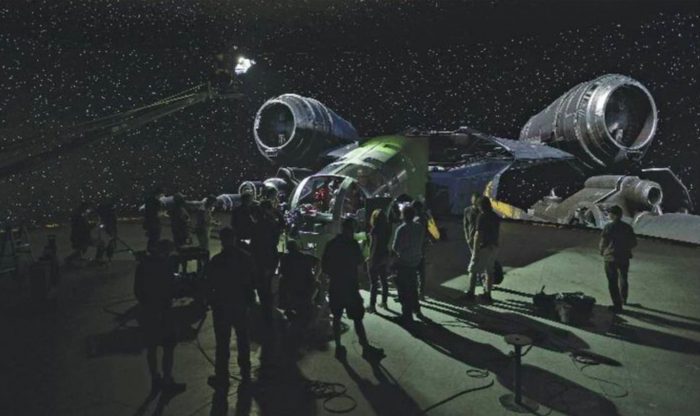
The Stagecraft technique is even used for some shots of the Razor Crest in space. Again, a completed practical ship isn't needed, and the screens allows the camera to move around the cockpit of the ship without having to worry about replacing a green screen in post-production with visual effects. Yes, sometimes some touching up is required to get rid of the visible seams of the screen itself, but that's far less work than building the entire ship digitally and matching it to camera angles that way.
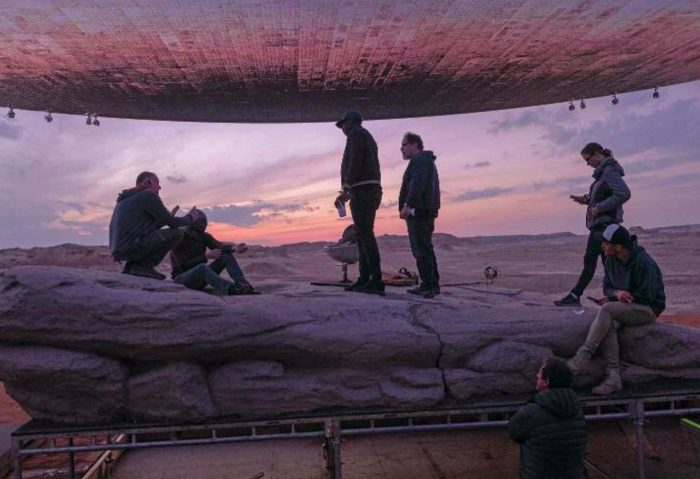
This kind of tech is truly a gamechanger. It's not something everybody can do since it's still expensive. But it's cheaper and more efficient. As time goes on and the technology becomes easier to replicate, this could not only make blockbuster production less risky, but it could allow independent productions to pull off higher production quality without breaking the bank. We're very interested to see how this technology evolves in the future.
All photos come from the latest issue of the American Cinematographer (via The VP Movie Club). You can learn more about how The Mandalorian was shot with this technology in a recent episode of the Go Creative Show podcast featuring an interview with cinematographer Baz Idoine right here.
